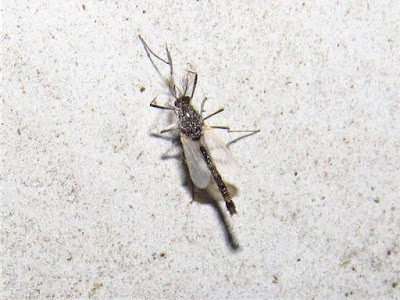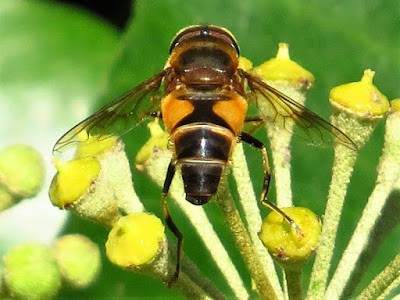10.0°C > 11.0°C: Mostly clear with some high clouds giving excellent sunrise. Calm start with light southerly breeze developing. Very good visibility.
Sunrise: 07:47 BST
* = a photo from today.
For reasons not entirely clear it was less busy than yesterday.
Priorslee Lake: 06:22 – 09:31
(230th visit of the year)
Bird notes:
- The Canada Geese were scattered all around the lake and I was never able to take a count at a location where I was satisfied the total was complete. 117 at least.
- A party of 27 Greylag Geese flew outbound, rather late after 08:30. A few minutes later the same (number) flew inbound. A few minutes after that at least 25 unidentified geese flew outbound to the North – the same? Then after another 15 minutes I saw groups of 12, then 13 followed by a single flew inbound. Possibly all the same birds?
- A brownhead Goosander departed to the West at 07:20. My first of this season here.
- Two single Starlings left the West end reeds at least 10 minutes before the main group of c.200 left the North side reeds. Then five more departed from the West end together.
Birds noted flying over here:
- 27 Greylag Geese at least: see notes
- 33 Wood Pigeons
- 8 Lesser Black-backed Gulls
- 58 unidentified large gulls: pre-dawn
- 3 Cormorants
- *101 Jackdaws
- 81 Rooks
- 1 Raven
- 4 Skylarks
- 63 Redwings
- 16 Fieldfare
- 10 Pied Wagtails
- 1 Siskin
Warblers noted:
- 16 Fieldfare
- 10 Pied Wagtails
- 1 Siskin
Warblers noted:
None
Birds noted leaving roosts around the lake:
- c.200 Starlings: see notes
- 17 Redwings
- 19 Reed Buntings: more calling
Counts from the lake area:
- >117 Canada Geese: see notes
- 2 + 4 (1 brood) Mute Swans
- 3 (1♂) Gadwall
- 2 (1?♂) Eurasian Wigeon again
- 10 (7♂) Mallard
- 29 (13♂) Tufted Duck
- 1 (0♂) Goosander: flew off 07:20
- 10 Moorhens
- 218 Coots
- *11 Great Crested Grebes again
- *>225 Black-headed Gulls
- *6 Herring Gulls
- *47 Lesser Black-backed Gulls
- 32 unidentified large gulls: pre-dawn
Noted on / around the street lamp poles pre-dawn
Birds noted leaving roosts around the lake:
- c.200 Starlings: see notes
- 17 Redwings
- 19 Reed Buntings: more calling
Counts from the lake area:
- >117 Canada Geese: see notes
- 2 + 4 (1 brood) Mute Swans
- 3 (1♂) Gadwall
- 2 (1?♂) Eurasian Wigeon again
- 10 (7♂) Mallard
- 29 (13♂) Tufted Duck
- 1 (0♂) Goosander: flew off 07:20
- 10 Moorhens
- 218 Coots
- *11 Great Crested Grebes again
- *>225 Black-headed Gulls
- *6 Herring Gulls
- *47 Lesser Black-backed Gulls
- 32 unidentified large gulls: pre-dawn
Noted on / around the street lamp poles pre-dawn
Another miscellaneous collection.
- *2 November Moths agg. (Epirrita dilutata agg.)
- several unidentified flies of different species
- several unidentified gnats and midges of different species
- 1 owl midge Psychodidae sp.
- *1 springtail
- 1 Common European Earwig (Forficula dentata)
- *1 Nursery Web Spider (Pisaura mirabilis)
- *1 stretch spider Tetragnatha sp.
- 1 Paroligolophus agrestis harvestman
Noted later:
- Grey Squirrel
A very good sunrise this morning. Here the colour is starting to appear. As we will see many Canada Geese were scattered around.
Colouring up!
Many geese in the foreground and a few Black-headed Gulls flying around.
A rather longer view with the colour spreading across the sky.
An adult winter Black-headed Gull flies by. It is just possible that the outer-most primary is still regrowing.
A different bird flying the other way appears to have a longer outer-most primary, but only on its left wing.
The same bird a few moments later shows the length can be an illusion as the outer-most primary on the left wing now looks shorter!
Two Herring Gulls in the centre of this shot. A first winter on the left pecking at the green buoy. A second winter on the right. A rather small individual - compare with the adult Lesser Black-backed Gull at the back left. Tail-on front left is a first winter Lesser Black-backed Gull. Quite why immature Herring Gulls frequently peck at buoys is unclear. With red or orange buoys the theory is that it is a hang-over over from programmed juvenile behaviour when they peck the adults' red bill-spot to encourage them to regurgitate food. But to peck at a green buoy?
An adult Lesser Black-backed Gull with plenty of head-streaking indicates it is in winter plumage. I normally identify this species from the underside by the dark area all along the rear of the wings. What I have never appreciated as clearly as shown here is that the wide white trailing edge to the secondaries when seen from above is replicated when seen from below. This cannot be a full adult as the bill is not yellow with a red spot.
Here an adult Great Crested Grebe is in front of one of its juveniles. There are still three pairs with begging juveniles.
I do not often get the opportunity to photograph Jackdaws as most go over from nearby roosts well before it is light enough. They are not as black as you might suppose and have a grey shawl behind the black crown. They have a quite alarming staring white eye.
The two November-type Moths. Despite their apparent difference in markings and size there is no reason to suppose these are different (or the same!) species.
A plumed midge. This is the species with a very slim abdomen and therefore probably not a Chironomus plumosus.
I think this is a springtail though it looks very different from most that I see.
The unmistakable shape of a Nursery Web Spider (Pisaura mirabilis) with markings largely obscured by a heavy dew.
Also a distinctive shape is this stretch spider Tetragnatha sp. sitting in its web.
Plane of the day behind thin cloud. This Boeing Dreamliner belongs to what is now TUI Airways but was Thomson Airways and before that Thomsonfly and way, way back Britannia Airways. It still keeps the flight code 'BY' from that era. It is now part of the TUI Group, a German travel organisation which also has subsidiaries in Belgium and the Netherlands.
And here from Flight Radar is the flight details. Punta Cana is in the Dominican Republic.
(Ed Wilson)
------------------------------------------------------------------------------------------------------
The Flash: 09:34 – 10:34
(222nd visit of the year)
Bird notes:
- All four Mute Swan cygnets were present and correct.
- One of the fishermen noted Cormorants were present at first light and suggested they are roosting here.
- A lone Redwing flew out of trees near The Priorslee pub.
Birds noted flying over here:
- 1 Skylark
Noted on / around the water
- 19 Canada Geese
- 72 Greylag Geese
- 2 + 4 (1 brood) Mute Swans
- 42 (26♂) Mallard
- 1 (1♂) all-white duck (Peking(?) Duck)
- 5 (0♂) Tufted Duck
- 4 (0♂) Goosander
- 12 Moorhens
- 29 Coots
- 4 Great Crested Grebes: one adult again
- 15 Black-headed Gulls again
- 4 Cormorants
- 2 Grey Herons again
On / around the street lamp poles:
Nothing noted
Noted later
Noted later
All around the Ivy bank:
- *Common Wasp (Paravespula vulgaris)
- *Plain-faced Dronefly (Eristalis arbustorum)
- *Tapered Drone Fly (Eristalis pertinax)
- *Common Drone Fly (Eristalis tenax)
- *Syrphus sp. (S. ribesii / S. vitripennis)
Catching the sun is one over about 100 Common Wasps (Paravespula vulgaris) I saw on and around the Ivy.
My initial thought was that this was a Tapered Drone Fly (Eristalis pertinax) with rather different abdomen markings – they can be very variable. But I now think this specimen is too small and it is likely a Plain-faced Dronefly (E. arbustorum). There are two similar species and separation would require a view of the facial markings. Plain-faced Dronefly is however most likely at this date.
This IS a male Tapered Drone Fly feeding in the Ivy flowers.
A different male Tapered Drone Fly.
A female Common Drone Fly (Eristalis tenax) with her tongue buried in the Ivy.
This hoverfly is one of the Syrphus sp. (either S. ribesii or S. vitripennis). Only females are separable from photos that clearly show the hind femur. This doesn't!
(Ed Wilson)
------------------------------------------------------------------------------------------------------
On this day can be found via the yearly links in the right-hand column.
Sightings from previous years without links are below
2013
Priorslee Lake
1 adult Yellow-legged Gull
1 adult Great Black-backed Gull
4 Gadwall
1 Teal
(John Isherwood)
Nedge Hill
A Raven tussling with Sparrowhawk
(John Isherwood)
2010
Priorslee Lake
389 Fieldfare
6 Redwings
(Ed Wilson)
2009
Priorslee Lake
15 Pochard
34 Tufted Duck
13 Moorhens
232 Coots
1 Redwing heard
(Ed Wilson)
2005
Priorslee Lake
A male Stonechat the west end
2 Gadwall
A drake Shoveler
14 Pochard
44 Tufted Duck
Siskin
Redpoll
C.350 Starlings in the roost
20 Redwings
209 Coot
Kingfisher
(Ed Wilson)























